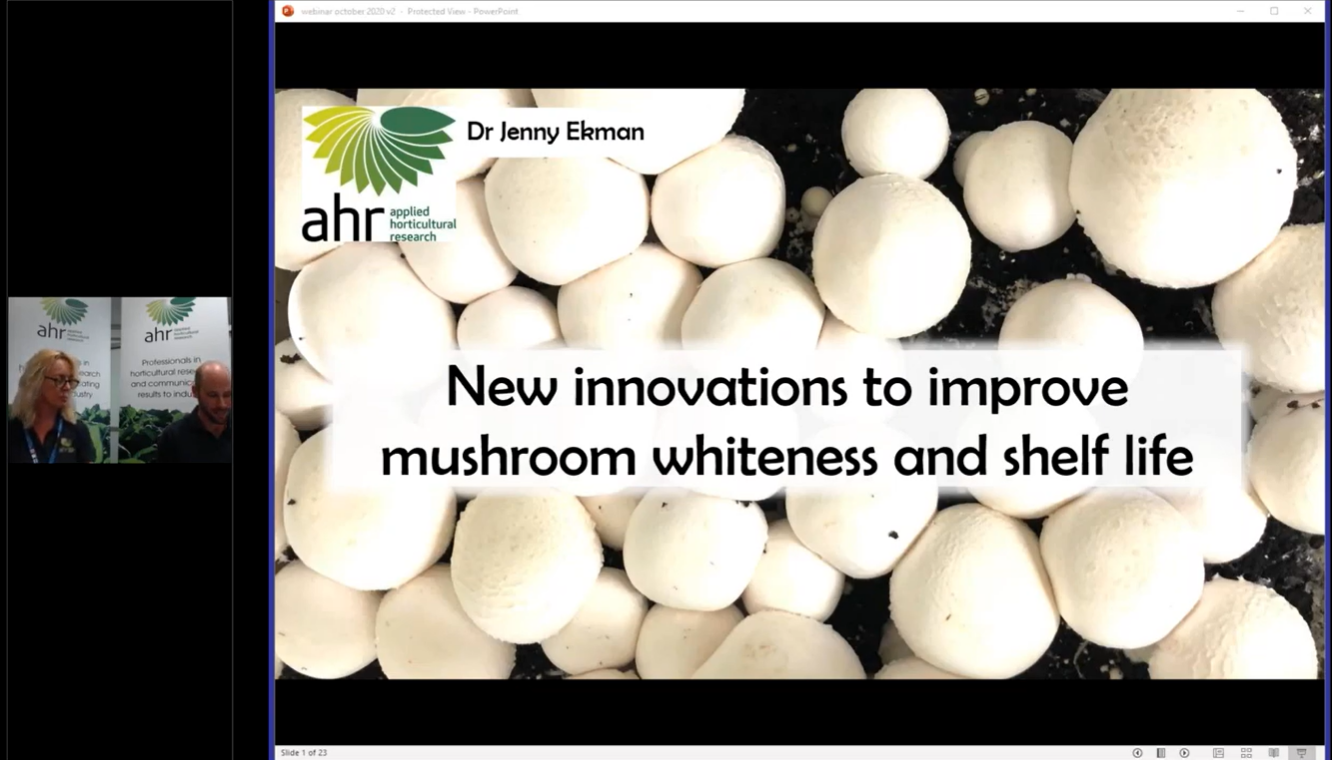Reviewing the factors that improve mushroom whiteness
For mushrooms, whiteness signals quality. It may also be assumed to indicate storage life, flavour and freshness. Presenting clean, white mushrooms to consumers is a proven way to increase sales. Conversely, browning on mushrooms is definitely a negative. Browning may be due to disease, bruising, dehydration or simply age and senescence.
Project MU19005 has reviewed the factors that improve mushroom whiteness, from the time compost and casing are prepared through to harvest and packing. The result is a combination of strategies growers can use right now, techniques that are close to commercialising and advances to watch into the future.
Dr Jenny Ekman will summarise the results from this review and discuss some of the “Best Bets” growers can use to improve mushroom whiteness.
Recycled organics as an alternative to peat in mushroom casing
The Australian mushroom industry uses approximately 25,000 tonnes of peat casing every year. Mostly imported from Europe or Canada at a cost of $300 per tonne, peat is both an expensive and limited resource.
Compost made from recycled organics is locally available and cheaper than peat.
Join Adam Goldwater from Applied Horticultural Research for a webinar where he will present the results of the recent trials of commercially viable white mushroom crops cased with blends of composted recycled organics and peat.
This is a Waste Less Recycle More initiative funded from the waste levy.


